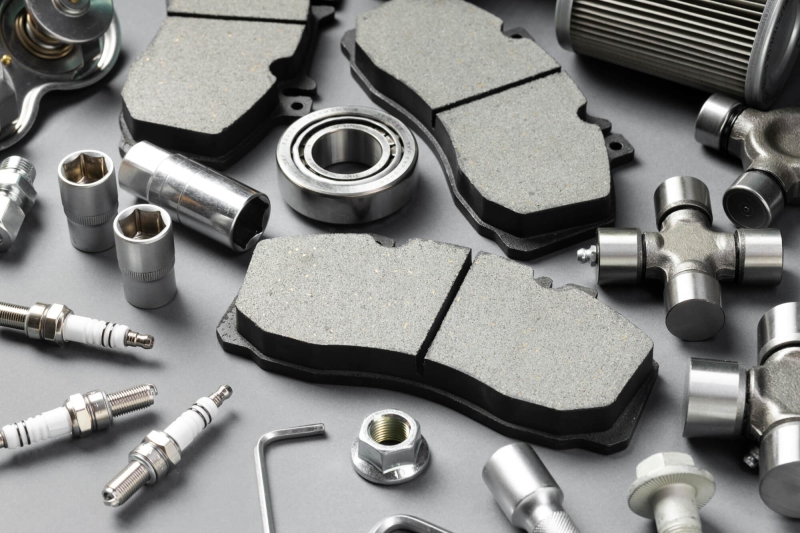
During the history of mankind, several types of materials for manufacturing were developed, with plastic being one of the most important. Today, products made with plastic materials can be found in the most diverse markets and applications, whether civil construction, automotive, white goods, among others. It is estimated that more than 200 million tons of plastic is generated each year in the production of plastic parts. The gradual increase in the use of plastic parts compared to other types of materials is mainly due to their high durability, their low production cost and the reprocessing of this material.
COMPOSITION
The plastic material belongs to the group of polymers and originates from oil-derived resins, called naphtha, and also from renewable sources, as made from beet, corn, sugar cane, cassava, among other types. of fonts. Polymers are materials composed of molecules of the most diverse sizes that are linked by polymerization reactions.
TYPES OF PLASTICS
There are several types of plastics, flexible, rigid, transparent, with thin thickness, with the most diverse characteristics. They are classified into two groups according to their melting or melting characteristics, these two groups are thermoplastics and thermosets or thermosets, being, respectively, recyclable and non-recyclable at high temperatures.
THERMOPLASTIC MATERIALS
Thermoplastic materials are a type of synthetic material, which softens easily when heated and does not undergo chemical changes after heating, so they can be molded due to their less rigid molecular structure. Due to this feature, thermoplastic materials can be molded into different types of formats and repeatedly. In this way, all thermoplastic materials are potentially recyclable, and this characteristic is a great advantage of this type of plastic material over other materials. Currently, it is estimated that 80% of the plastics consumed in the world are plastic materials belonging to this group.
Thermoplastic polymers can be transformed and molded through injection, extrusion, blowing, thermoforming, rotational molding and machining processes.
The main types of thermoplastic materials are as follows: Polyethylene terephthalate (PET), High density polyethylene (HDPE), Polyvinyl chloride (PVC), Low density polyethylene (LDPE), Polypropylene (PP) and Polystyrene (PS) .
Polyethylene terephthalate (PET)
PET material is the most widely used plastic in the world and is a type of plastic formed by the reaction between terephthalic acid and ethylene glycol. It is a material with high rigidity and transparent, has excellent resistance to impact, is waterproof and light.
The main applications of PET plastics are in flasks and bottles for food use, hospital use, cosmetics and cleaning products, trays, waterproofing blankets and textile fibers.
High Density Polyethylene (HDPE)
HDPE is a plastic produced from the monomer ethylene, which can be obtained from oil or vegetable sources, and is known as green plastic because it is biodegradable. It is a material that is characterized by good chemical and mechanical resistance, light weight, resistant to low temperatures, impermeable, and can be rigid or flexible when it has low thicknesses.
High-density polyethylene has as its main applications in automotive plastic parts, detergent and oil packaging, plastic bags, paint drums and pots for housewares.
Polyvinyl chloride (PVC)
PVC is one of the best-known plastic materials, it is made up of 57% chlorine (derived from a salt of the same type as cooking salt) and 43% ethylene (derived from petroleum). This material has a wide range of applications due to its versatility in adding additives, generating products with very different properties for different applications. It is mainly used in civil construction, fashion and medicine, in the manufacture of pipes for water and sewage, hoses, packaging for medicines, hospital accessories, toys and synthetic leather for the footwear, handbags and upholstery industry.
Its characteristic is that it is a material that has excellent resistance to temperature and mechanics, impermeable, durable, rigid and transparent if desired.
Low Density Polyethylene (LDPE)
It is a material obtained through the polymerization of ethylene, which can be obtained from oil or vegetable sources, such as HDPE, and is also known as green plastic. Its main application is plastic bags, garbage bags, food packaging films, industrial bags, medical serum bags and disposable diapers.
Its characteristic is that it is a flexible, lightweight, non-toxic, transparent and waterproof material, capable of withstanding temperatures of up to 80°C.
Polypropylene (PP)
The polypropylene material is a polymer originated from the polymerization of propylene or propylene. It is widely used in packaging for food, medical accessories, plastic chairs and for automotive parts.
Polypropylene has properties similar to Polyethylene and its main characteristics are rigidity, transparency, brightness and preservation of aroma.
Polystyrene (PS)
Polystyrene is obtained by polymerizing styrene. PP is a cheap and fragile material, widely used in the manufacture of disposable products or products that require high transparency. This material is mainly used in housewares, refrigerators (internal parts), plates, lids, disposable cups and cutlery, toys and medical devices.
Its characteristics are being a light material, thermal insulation capacity, flexibility.



